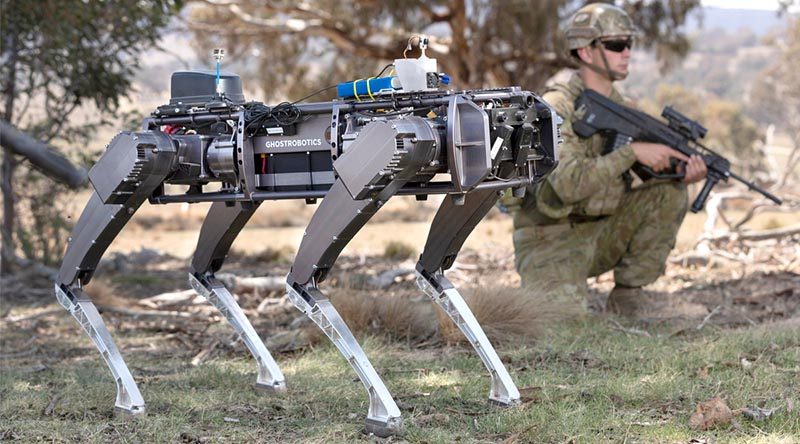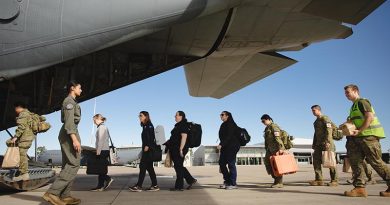Discussion paper suggests AI may command humans on future battlefields
Share the post "Discussion paper suggests AI may command humans on future battlefields"

A Monash University-led paper suggests artificial intelligences could lead armies of the future onto battlefields.
FILE PHOTO: A Ghost Robotics unmanned ground vehicle supports Australian soldiers in clearing an enemy position during a technology demonstration in Canberra. Photo by Corporal Tristan Kennedy.
Published in Parameters, the journal of the US Army War College, the paper suggests teams of humans under the control, supervision or command of artificial intelligences are likely to beat teams of human-controlled robots on the battlefields of tomorrow.
Monash University Professor of Philosophy Robert Sparrow led the research with University of Twente Dr Adam Henschke.
The research found artificial intelligences are more capable of performing the cognitive tasks most relevant to fighting wars than robots are at replicating the functions of the human body needed on the battlefield.
“When humans and intelligent machines work together in teams in industry today, it is often the machines who are doing the mental work while humans do the physical work,” Professor Sparrow said.
“We think that will be true in the military as well.”
The study found the image of a minotaur — a mythical creature with the body of a man and the head of a bull — is more appropriate compared to current doctrine, which imagines human-robot teaming on the model of a centaur – a mythical creature with the head and arms of a man and the body of a horse.
The research highlights that research in AI is currently progressing faster than research in robotics, leading the researchers to conclude that AI “heads” are better than robot “bodies”.
This is one of the reasons why, suggest the authors, the workers who work in Amazon’s warehouse are reduced to being the hands of machines.
When it comes to logistics, instead of humans choosing a destination to which an autonomous vehicle drives, autonomous systems instruct humans when, where, and how to drive.
Professor Sparrow said the Ukrainian military is already using an algorithm akin to that used by Uber to assign drivers to riders to assign targets to weapon systems in the current war with Russia.
“New technologies are increasing the tempo of battle to the point where human beings struggle to keep up,” he said.
“Eventually, the pursuit of victory may require handing over command to machines and victory may be determined by which force has the better AI.
“Given the pace at which AI is being developed there is an urgent need to consider the implications of minotaur warfighting, both for the effectiveness of the fighting forces of the future and for the human beings who will increasingly fight wars at the direction of machines.”
Professor Sparrow said there may also be an ethical imperative to put humans under machines’ control, supervision and command, to preserve their lives on the battlefield.
However, the authors also highlight ethical concerns about minotaur warfighting, including whether machines should be granted the authority to send humans to their deaths, and the question of whether placing people under the command of machines treats human beings as tools.
While the minotaurs may be the way of the future, the authors argue that we need to be assured victory in warfare won’t cost our humanity.
.
.

.
.
Share the post "Discussion paper suggests AI may command humans on future battlefields"





